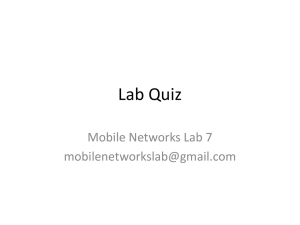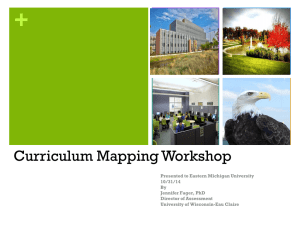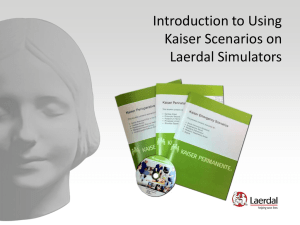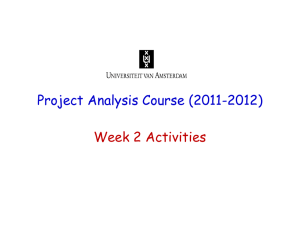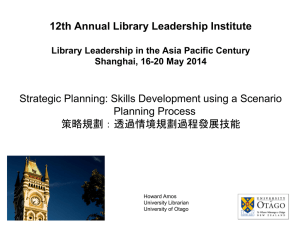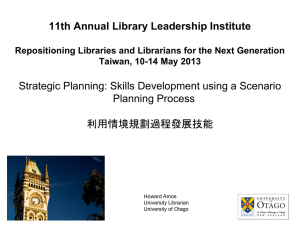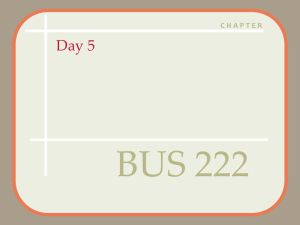Strategic planning--scenarios - National Academy of Indian Railways
advertisement
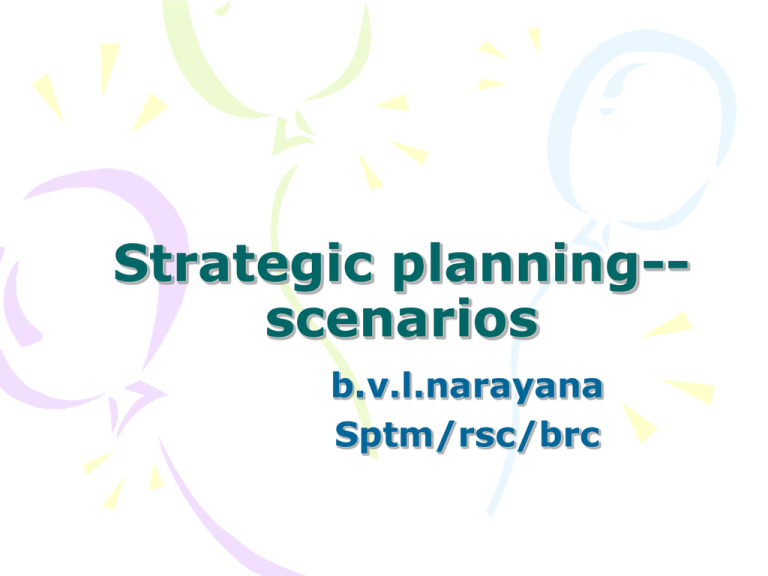
Strategic planning-scenarios b.v.l.narayana Sptm/rsc/brc Definitions • Scenario analysis – is a process of analyzing possible future events by considering alternative possible outcomes (scenarios). – Brings into planning interaction effects of various uncertainties – Allows identification of patterns duly including subjective interpretations – Forces consideration of alternatives Scenario analysis • Benefits – Useful in conditions of high uncertainty – Useful to avoid past mistakes – Enables consideration of multiple and new alternatives – Improves quality of strategic thinking – Facilitates communication of ideas – Facilitates incorporation of multiple divergent ideas – Allows creation of a dynamic planning system Scenario analysis • Process – Knowledge about business scenarios • Things are known • Things which we do not know about – Aim is to circumscribe the possible outcomes of uncertainties – Aim to identify possible futures in terms of fundamental trends and uncertainties Scenario analysis • Process – Define scope • Time frame, scope of analysis-markets, tech • Identify changes in past –same time frame – Stake holders-customers, suppliers, government – Basic trends –PEST analysis – Key uncertainties –affecting your interests—PEST » The relationships amongst these factors • Construct initial scenarios – Club all positive and negatives separately or by preparedness, likelihood, Scenario analysis • Process – Check for consistency and plausibility – Develop learning scenarios • Identify themes strategically relevant and organize outcomes and trends by it • Name the scenario – Research further on learning scenarios – Develop quantitative models – Identify decision scenarios • Converge to scenarios used to test strategies Scenario analysis • Process – Is an iterative process – Scenarios are useful if • • • • Describe generically different futures Are relevant Internally consistent Describe a state of relative equilibrium – Create • Signposts for reality checks at points of time • Identify hedging strategies –adjust uncertainty • Identify shaping strategies- key to target achievements Scenario analysis-IR • Trends – Maturation of consumer – Growing competition – Growing economy – Globalization – Desegregation of services and manufacture – Increasing technological sophistication – Increasing use of ICT Scenario analysis-IR • Trends – Increasing demand for leisure – Increasing emphasis on religion – Growing conflicts • Internally • Internationally – Increasing willingness to pay – Growing Government regulation—size, managing conflicting public demands Scenario analysis-IR • Trends – Increasing homogenization of distribution of industries – Increasing concerns for environment and sustainable development – Changing power equations among governments—trade, technology, finance transfers – Emphasis on de-urbanization Scenario analysis--IR • Uncertainties – Globalization versus protectionism – Competition – • value chain migration or differentiation• In house or outsource – Compete or collaborate among modes • At customer level, policy level – TAX BENEFITS –CONTINUE OR NOT – Evolution of construction agencies • Numbers, skills, technology – Evolution of HR—skills , numbers – Financial flows • national., international Scenario analysis-IR • Three possible options—learning – Globalization versus localization – Competition – • integration versus fragmentation • Modal competition versus collaboration • Competition for resources – Government regulation • Tax, Financing, • Policy interventions Scenario analysis-IR Globaliza integrati tion on Globaliza tion integrati on competit ion + competit ion Resource Tax Policy fight incentive control +?_ + _ _ - - +/- + ++ +/- - +/- - Resource fight Policy control Index -- + positive; - negative; ? Not known Scenario analysis --IR • Impact outcomes possibilities – Resource fights –costs, inability to deliver services – Tax incentives- loss to increase- impact bottom line – Globalization –increased integration, niche segregation, networks, skills transfer – Policy control—increase to decrease – Competition –lobbying for policy to extreme competition – Integration – value segmentation to value chain integration Scenario analysis--IR • Final impact possibilities – Size of organization – • mega to niche • Single to networks – Economic growth • Low to high • Isolated to globalised – Competition • Intense –innovation driven to collaborative networks Scenario analysis-IR • Scenarios – Globalised , large, value chain integrated – Globalised , networked , value chain integrated by collaboration – Localized, large, value chain integrated – Localized, networked, value chain integrated – Mix , niche-value chain segregation, independent – mix, value chain networked, Scenario analysis--IR • Time frame—20 years – Sign posts— • every five years for major shifts • Every year for impact assessment – Hedging strategies • Collaborate • Develop capacities—line, training, asset production, vendors • Earn through non capacity mechanisms – Shaping strategies • Get into value chain integration • Policy framing and lobbying representation OBSERVE Thanks – any questions COLLABORATE IDEAS SEARCH



